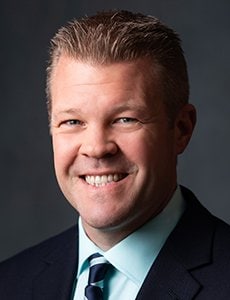
Sports physicals, injury prevention and training - what you need to know
by Jessica Brewer and Joe DeLeo, LMH Health
With the school year right around the corner, many student-athletes preparing for the upcoming season and are required to get a sports physical. Dr. Emily Heronemus, a sports medicine physician with OrthoKansas, says that now is the time.

Emily Heronemus, DO
“Before school begins, and especially before sports begin, make sure that your child has a sports physical,” Heronemus said. “These physicals are good for a full year, so even if you participate in only winter sports, now is a good time to get it done.”
Sports physicals are not only precautionary but help analyze an athlete’s body as they begin to move more. The exam provides a time to chat about injury prevention and to talk about injury history or any concern you may have for the upcoming sports season.
“Tell us about any issues you have dealt with during exercise or athletic competition such as chest pain, concussion, shortness of breath or other medical needs,” Heronemus said. “We need to identify areas that may need further work up prior to athletic participation or areas where you may need to strengthen muscles, prevent injury or work out so you are fully prepared to begin training. We want to make sure nothing prevents you from playing the sport you love.”
Heronemus recommends staying hydrated and not jumping into high-intensity training immediately. Jumping right in can severely strain your body, so it is best to gradually progress the intensity as the season continues.
Preventing injury
According to the Centers for Disease Control, more than half of all sports injuries in children are preventable. So why is it that many student-athletes suffer from serious injuries early in their athletic careers?

Dan Lorenz, DPT
Dan Lorenz, director of sports medicine for LMH Health, said that overuse injuries are responsible for nearly half of all sports injuries to middle and high school students.
“Do kids play multiple sports because they are good athletes, or are they good athletes because they play multiple sports?” Lorenz asked. “Kids aren’t developing their athleticism; they’re just working on skill.”
Lorenz, doctor of physical therapy and the only fellowship-trained sports physical therapist in Lawrence, said that kids are starting to specialize in one sport too soon. When you specialize before adolescence, it not only can take the fun aspect out of it, but it strips a child’s free time and trains them only in one sport. Participating in multiple sports grows skills and allows kids to be involved in a variety of different activities. In a 2014 survey of U.S. Olympians competing from 2002-2012, 88 percent said that playing more sports made them better athletes.
“Kids are not ‘mini-adults’,” Lorenz said. “They should not be training more hours than their age number per week.”
If you are unsure what level your child is at from a strength perspective, LMH Health can help. The team at the Performance & Wellness Center offers sports performance classes for middle and high school athletes focusing on strength, power, speed and agility. We also offer adult classes such as Golf Power, RunStrong, and Adult Movement & Strength. Contact 785-505-5840 or stop by the center at Sports Pavilion Lawrence to try out a class.
Lorenz said there are many problems with young, intense competition. He said that children in sports hardly have an off-season. Some coaches and parents are professionalizing youth sports, which can remove the joy of playing. Kids are doing exercise and training geared towards adults, which may actually be more hurtful to their bodies than helpful.
“It is important that athletes listen to their bodies and that parents advocate for their kids,” Lorenz said. “If they need to sleep in to recover, let them. If your athletes are in pain, get them checked out before it gets worse. Don’t push things off.”
Lorenz stresses the importance of time off, rest and diet. When an athlete exceeds 16 hours per week of total sports participation, they seem to have the highest risk of injuries.
“Sleep is critical,” Lorenz said. “It is important to put the screens away and get a good night’s sleep. Other ways to avoid injury are improving physical fitness and maintaining a healthy diet. The biggest risk for injury is previous injury, hands down.”
Strength & Conditioning
When it comes to strength and conditioning for young athletes, it is critical to get the fundamentals in place. Lorenz notes that many kids cannot do basic movements like squats, single-leg squats, lunges or push-ups with proper form and control, or hold a basic plank position with proper alignment.
Executing the basics properly prepares kids for later years when more advanced weight training takes place. A good strength base with proper exercise technique can help avoid sports injuries.
“Growing bodies have too much asked of them without the strength to sustain the constant activity,” Lorenz said.
Athletes should begin the strength-training journey by owning their bodyweight. Are they able to execute basic movements with good form control? If so, they have earned the right to progress to using external loads such as dumbbells, medicine balls and kettlebells. Proper execution of basic, “elementary” exercises are critical for proper performance of “middle school” exercises such as loaded squats.
Even if a child is physically in middle school, they may be in elementary school from a strength perspective without proper training. Lorenz believes that young athletes should be developing movement skills like jumping, hopping, marching and skipping with proper technique. Education in strength training and conditioning will help prevent injury and keep young athletes playing the sports they love.
Jessica Brewer is the social media and digital communications specialist and Joe DeLeo is a certified strength and conditioning specialist for LMH Health.